Jigme Dorji National Park is one of the most significant natural reserves in Bhutan, covering an area of 4,316 square kilometres. Located in the country’s northwestern region, it stretches across five districts: Gasa, Thimphu, Paro, Punakha, and Wangdue Phodrang. Named after the third king of Bhutan, the park is a haven for biodiversity and a key cultural landscape. Home to some of the world’s rarest wildlife species, such as the snow leopard, Himalayan blue sheep, and the Bhutanese takin, it is also a place of immense spiritual significance, housing several sacred sites, including monasteries, dzongs, and ancient trade routes.
Jigme Dorji National Park Location
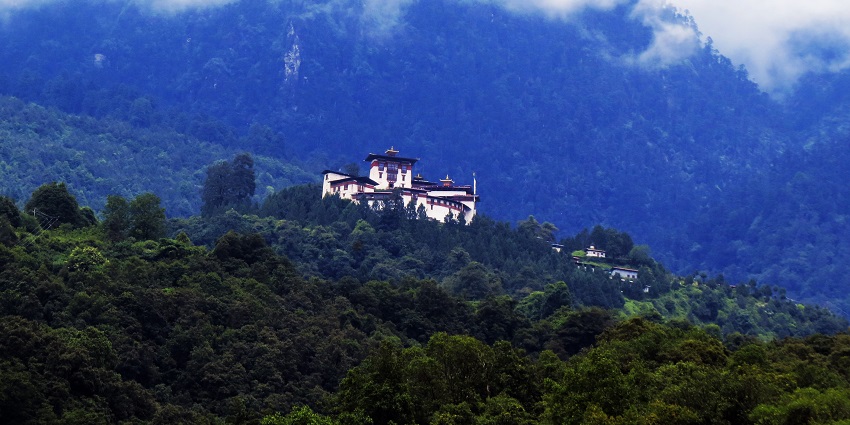
Photo: A. J. T. Johnsingh / Wikimedia Commons
Jigme Dorji National Park is located in the northwestern part of Bhutan. It spans across multiple districts, including Thimphu, Paro, Punakha, Gasa, and Wangdue Phodrang. The park covers a vast area of approximately 4,316 square kilometres, making it one of the largest protected areas in Bhutan.
Suggested Read: Discover The Top Things To Do In Bhutan
How To Reach Jigme Dorji National Park
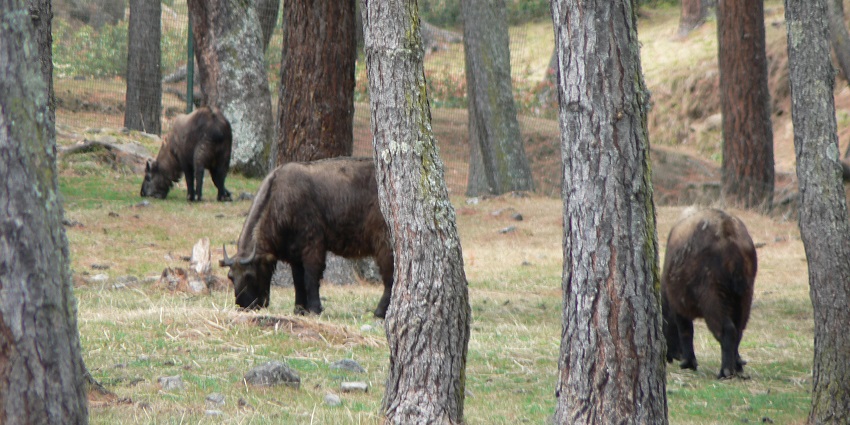
Photo: Stephen Shephard / Wikimedia Commons
By Air: The closest airport to Jigme Dorji National Park is Paro International Airport, approximately 50 kilometres away. You can hire a cab or take a bus to reach the park.
By Road: The park is accessible by road from Thimphu, Paro, and Punakha. From Thimphu, it takes about 2-3 hours to reach the park by car. The roads are well-maintained, offering scenic drives through Bhutan’s beautiful landscapes.
By Rail: There is no railway connectivity directly to Jigme Dorji National Park. The nearest railway station is in Hasimara, India, about 200 kilometres from Thimphu. From there, you can take a bus or hire a taxi to reach the park.
Places To Visit Around Jigme Dorji National Park
1. Gasa Hot Springs (Gasa Tshachhu)
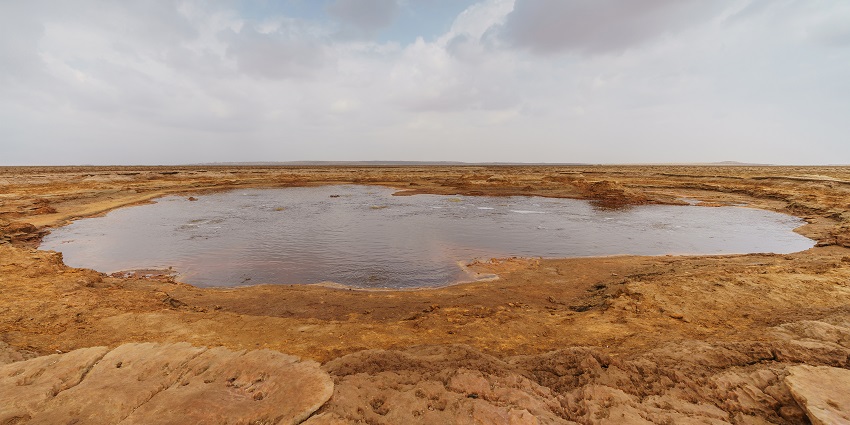
Photo: A. Savin / Wikimedia Commons / Image For Representation Only
The Gasa Hot Springs, located within Jigme Dorji National Park, are renowned for their therapeutic waters, believed to cure ailments like arthritis and body aches. Surrounded by lush greenery and the tranquil atmosphere of the park, the springs offer a perfect retreat after a day of trekking or exploring the rugged terrains. The hot springs are accessible via a short trek from Gasa Dzong, adding an element of adventure to the relaxation. Facilities around the springs include basic changing rooms and rest areas, making it a comfortable and rejuvenating stop for visitors seeking both physical and mental relaxation amidst nature.
Timings: Open 24 hours
Entry Fee: Free
Suggested Read: Discover The Top Things To Do In Thimphu
2. Laya Village
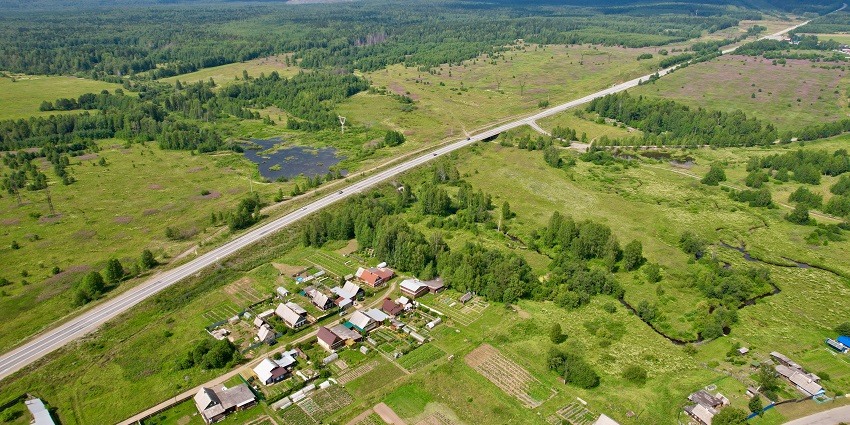
Photo: Vyacheslav Bukharov / Wikimedia Commons / Image For Representation Only
Laya Village, perched at an altitude of 3,800 metres, is one of Bhutan’s highest settlements and a unique cultural destination within Jigme Dorji National Park. The village is home to the Layap people, known for their distinct customs, traditional bamboo houses, and unique attire. The journey to Laya, often part of the challenging Snowman Trek, rewards visitors with breathtaking views of snow-capped mountains and a chance to immerse in the local culture. In Laya, visitors can experience the hospitality of the Layap people, learn about their lifestyle, and enjoy the serene beauty.
Timings: Accessible year-round, but best visited during daylight hours.
Entry Fee: Free
3. Punakha Dzong

Photo: Bernard Gagnon / Wikimedia Commons
Punakha Dzong, located near the southern boundary of Jigme Dorji National Park, is one of Bhutan’s most majestic and historically significant dzongs (fortresses). It serves as the administrative centre of Punakha District and a spiritual hub, housing sacred relics and hosting important religious events. The dzong’s stunning architecture, set between the Mo Chhu and Pho Chhu rivers, is a masterpiece of Bhutanese craftsmanship. Visitors to Punakha Dzong can explore its beautifully decorated halls and courtyards, and learn about Bhutan’s rich history and spiritual traditions.
Timings: 9 AM – 5 PM
Entry Fee: BTN 300 for foreign visitors, free for Bhutanese citizens
Suggested Read: Discover The Top Places To Visit In Bhutan
4. Chele La Pass
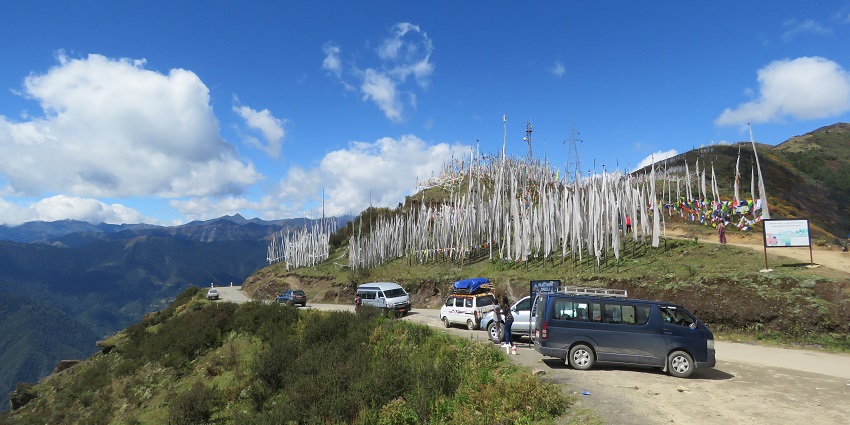
Photo: Vinayaraj / Wikimedia Commons
Chele La Pass offers breathtaking views of the Himalayan range, including the majestic peaks of Mount Jomolhari and Jichu Drake. It is located on the edge of Jigme Dorji National Park. The pass stands at an altitude of 3,988 metres and is a popular destination for visitors seeking panoramic views and natural beauty. The drive to Chele La Pass is an adventure, winding through dense forests of rhododendrons and pine trees. visitors can enjoy bird watching, see the rare blue poppy, and take in the serene mountain landscape, making it a must-visit spot.
Timings: Open 24 hours
Entry Fee: Free
5. Dochula Pass
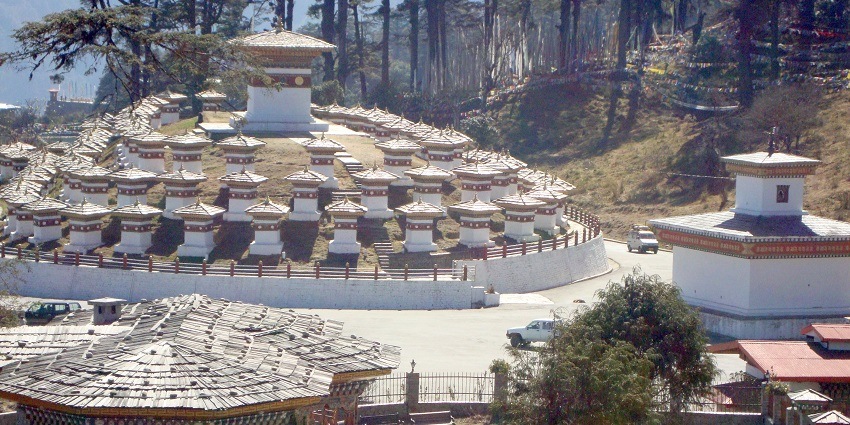
Photo: Sujithkr / Wikimedia Commons
Dochula Pass, situated on the way to Punakha, is another iconic viewpoint near Jigme Dorji National Park. The pass is famous for its 108 stupas built in honour of Bhutanese soldiers. On a clear day, Dochula Pass offers visitors stunning views of the eastern Himalayas, making it a popular stop for those travelling between Thimphu and Punakha. The peaceful atmosphere, combined with the panoramic mountain views and the spiritual significance of the chortens, creates a serene setting for reflection and appreciation of Bhutan’s natural and cultural heritage.
Timings: Open 24 hours
Entry Fee: Free
Suggested Read: A Guide To Airports In Bhutan
Where To Stay
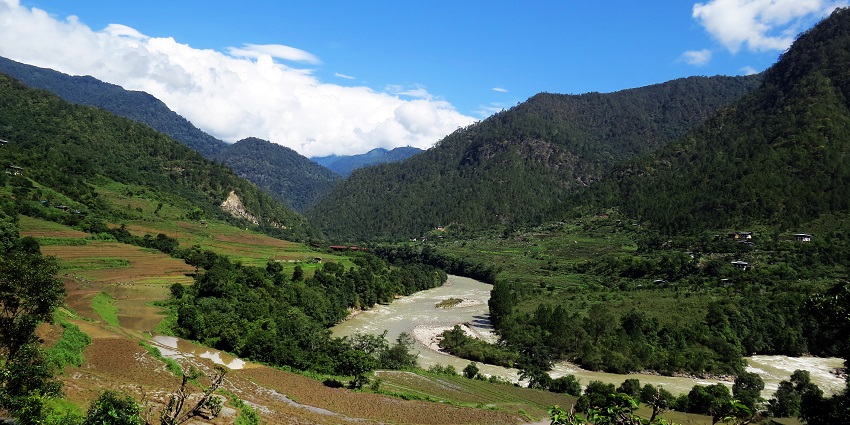
Photo: A. J. T. Johnsingh / Wikimedia Commons
Accommodation options around Jigme Dorji National Park range from basic guesthouses to more luxurious resorts. In Gasa and nearby areas, there are a few guesthouses and homestays that offer simple but comfortable accommodations, allowing visitors to experience the local way of life. For those looking for more comfort, Punakha offers several mid-range hotels and resorts with modern amenities, such as the RKPO Green Resort and Zhingkham Resort.
Where To Eat
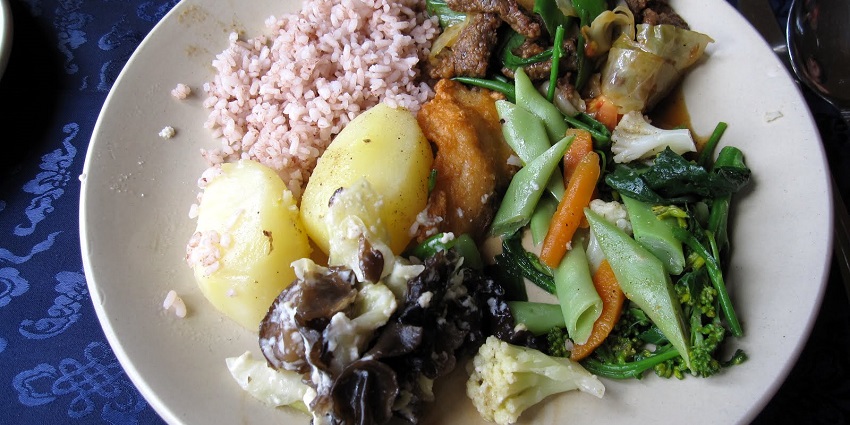
Photo: rapidtravelchai / Wikimedia Commons / Image For Representation Only
Dining options in and around Jigme Dorji National Park are limited, particularly within the more remote areas. Most guesthouses and homestays offer traditional Bhutanese meals, which typically include dishes like ema datshi (chilli and cheese stew), red rice, and various curries. In Punakha and Gasa, there are a few small restaurants and cafes where you can enjoy both local and international cuisine.
Suggested Read: Phobjikha Valley In Bhutan
Best Time To Visit Jigme Dorji National Park
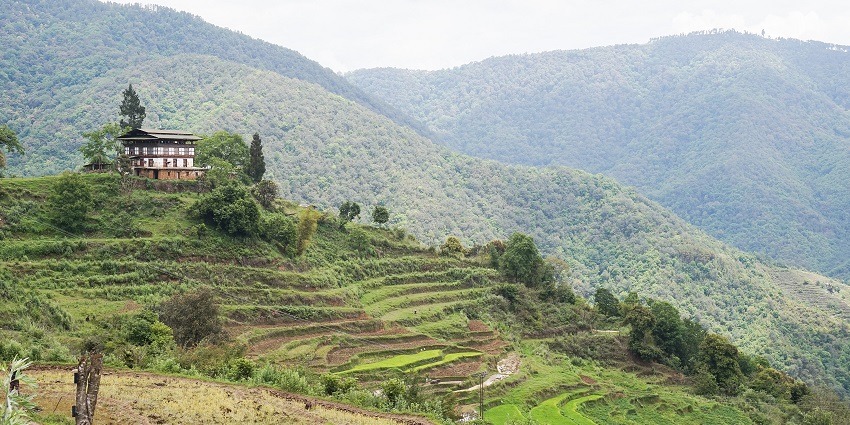
Photo: Bernard Gagnon / Wikimedia Commons
The best time to visit Jigme Dorji National Park is during the months of March to November. During these months, the weather is mild, and the skies are clear, offering the best conditions for trekking, wildlife viewing, and enjoying the park’s natural beauty.
Other Factors To Consider
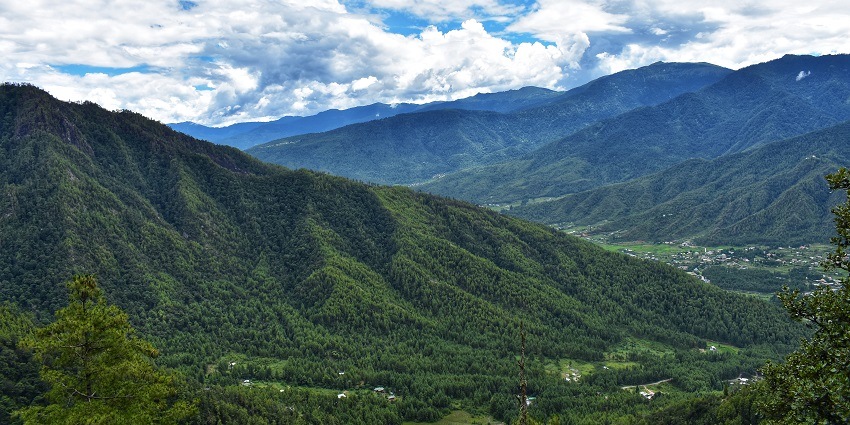
Photo: Goyaldevender / Wikimedia Commons
Average Cost of the Trip:
A trip to Jigme Dorji National Park can vary in cost depending on your travel preferences. Budget travellers can expect to spend around BTN 2,500 to BTN 3,500 ( 2,000 rs to 3,000 rs) per day, including accommodation in basic guesthouses, meals, and transportation. The Jigme Dorji National Park ticket price is only 150 BTN ( 150 RS) Mid-range travellers might spend between BTN 5,000 and BTN 7,000 per day (5,000 rs to 7,000 rs), which would cover stays in more comfortable hotels or resorts, guided tours, and dining at better restaurants.
Tips for Travellers:
- Prepare For Varying Weather: The weather in the park can change quickly, so pack layers, a waterproof jacket, and sturdy hiking boots.
- Plan timely: The Jigme Dorji National Park timings are 9 am to 5 pm so it is best to plan the visit accordingly.
- Respect Local Customs: Bhutanese culture is deeply spiritual, so dress modestly, especially when visiting temples or dzongs.
- Carry Sufficient Cash: ATMs are scarce in remote areas, so bring enough cash for your trip.
- Hire A Local Guide: Guides provide valuable insights into the park’s flora, fauna, and cultural sites and are essential for more challenging treks.
- Plan For Limited Connectivity: Mobile and internet coverage can be unreliable in the park, so inform someone of your plans before heading into more isolated areas.
- Adhere To Guidelines: kindly pay attention to guidelines and rules, such as clicking photos of Jigme Dorji National Park.
Suggested Read: Bhutan Picnic Places For An Unforgettable Vacation
Whether you’re trekking through remote villages, soaking in hot springs, or simply marvelling at the majestic Himalayan views, Jigme Dorji National Park provides a serene and enriching escape from the hustle and bustle of daily life. Ready to discover the wonders of Bhutan’s wilderness? Book your Jigme Dorji National Park adventure with TripXL today and immerse yourself in one of the most captivating natural reserves in the world.
Cover Photo: Andrewgrandison / Wikimedia Commons


 WhatsApp
WhatsApp
 Twitter
Twitter









